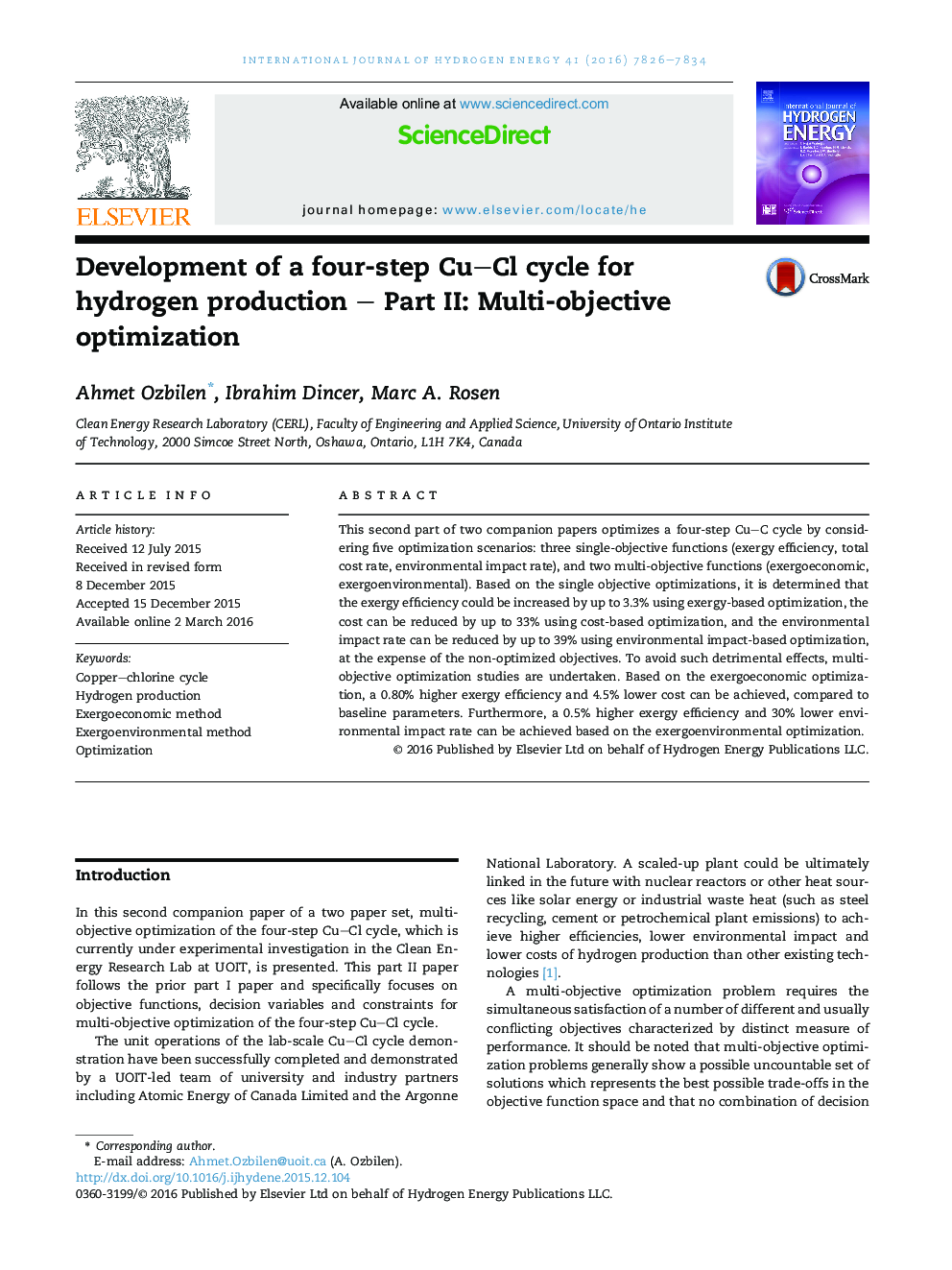| Article ID | Journal | Published Year | Pages | File Type |
|---|---|---|---|---|
| 1277276 | International Journal of Hydrogen Energy | 2016 | 9 Pages |
•An optimization of the four-step Cu–Cl cycle.•Utilization of exergoeconomic and exergoenvironmental methods.•Development of optimum operating conditions for hydrogen production.•Achievement of increasing efficiency and reducing cost and environmental impact.
This second part of two companion papers optimizes a four-step Cu–C cycle by considering five optimization scenarios: three single-objective functions (exergy efficiency, total cost rate, environmental impact rate), and two multi-objective functions (exergoeconomic, exergoenvironmental). Based on the single objective optimizations, it is determined that the exergy efficiency could be increased by up to 3.3% using exergy-based optimization, the cost can be reduced by up to 33% using cost-based optimization, and the environmental impact rate can be reduced by up to 39% using environmental impact-based optimization, at the expense of the non-optimized objectives. To avoid such detrimental effects, multi-objective optimization studies are undertaken. Based on the exergoeconomic optimization, a 0.80% higher exergy efficiency and 4.5% lower cost can be achieved, compared to baseline parameters. Furthermore, a 0.5% higher exergy efficiency and 30% lower environmental impact rate can be achieved based on the exergoenvironmental optimization.
